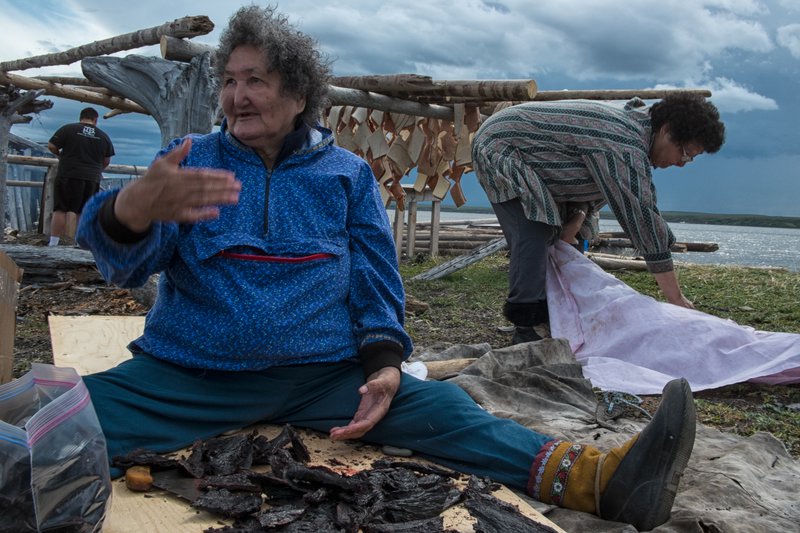Donate to Protect Aullaviat/Anguniarvik
Support Inuvialuit stewardship on the Yukon North Slope. Your donation will bolster the Aullaviat/Anguniarvik Trust, the mechanism through which the program will attain the goals set out in the Aullaviat/Anguniarvik Agreement, for generations to come.
Aullaviat/Anguniarvik Traditional Conservation Area is an area rich in biodiversity and cultural connections for Inuvialuit people covering almost 850,000 hectares of the Yukon Territory’s northeast coast. The 1984 Inuvialuit Final Agreement recognized the importance of this area and identified the entire northern portion of the Yukon as a place for conservation of wildlife, habitat and traditional Inuvialuit use. It has taken 40 years, but Inuvialuit, territorial and federal parties have come to an agreement and developed a management plan for Aullaviat/Anguniarvik to ensure conservation and cultural activities.
This new conservation area completes a network of protected areas across the northern Yukon envisioned in land claim agreements - including Ivvavik and Vuntut National Parks, Herschel Island-Qikiqtaruk Territorial Park, Old Crow Flats Special Management Area, and Dàadzàii Vàn Territorial Park. Together, these conservation areas support important wildlife populations such as the Porcupine Caribou Herd, polar bears, fish and migratory birds that local First Nations and Inuvialuit have stewarded for generations.
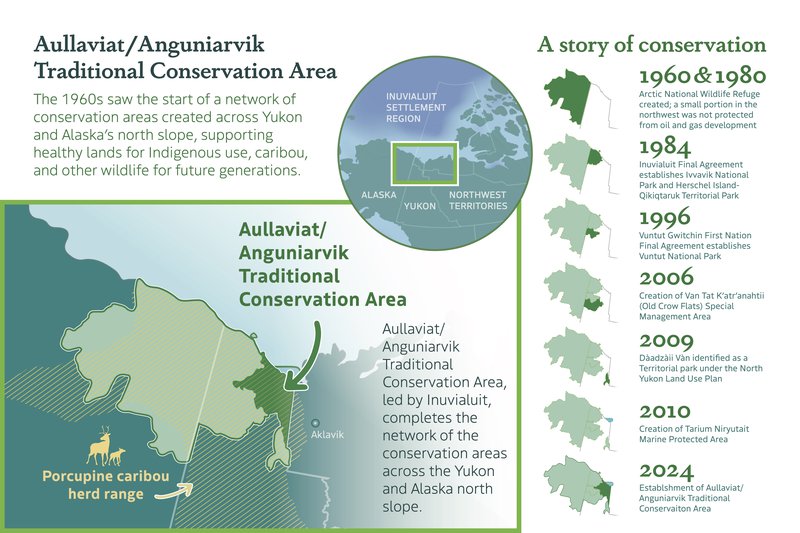
The Aullaviat/Anguniarvik Traditional Conservation Area will support the enhancement of Inuvialuit traditional use, cultural revitalization, and capacity-building for the current and future generation of Inuvialuit conservation leaders.
Aullaviat/Anguniarvik Pronunciation Help
Aullaviat/Anguniarvik means “where wildlife and people travel, a place to hunt”. Listen above to Elder Nellie Arey pronouncing Aullaviat/Anguniarvik. The phonetic pronunciation is Au-la-vat / Angu-niag-a-vik.
Goals of the Aullaviat/Anguniarvik Traditional Conservation Area
The goals of the conservation area and its management plan include the following:
- Promote, support and maintain Inuvialuit traditional use in order to preserve Inuvialuit culture, identity and values;
- Protect and conserve the wildlife, habitat and biological productivity and contribute to the implementation of the goals of the Inuvialuit Final Agreement, the Porcupine Caribou Management Agreement and the Wildlife Conservation and Management Plan;
- Advance the biodiversity goals and objectives of Canada and Yukon and the Inuvialuit Parties and support Canada’s biodiversity targets;
- Support Inuvialuit stewardship of the area’s wildlife, habitats and environment in response to a rapidly changing climate;
- Provide resources to Inuvialuit to play a primary role in the management and monitoring of the area; and
- Contribute to reconciliation amongst the Parties.
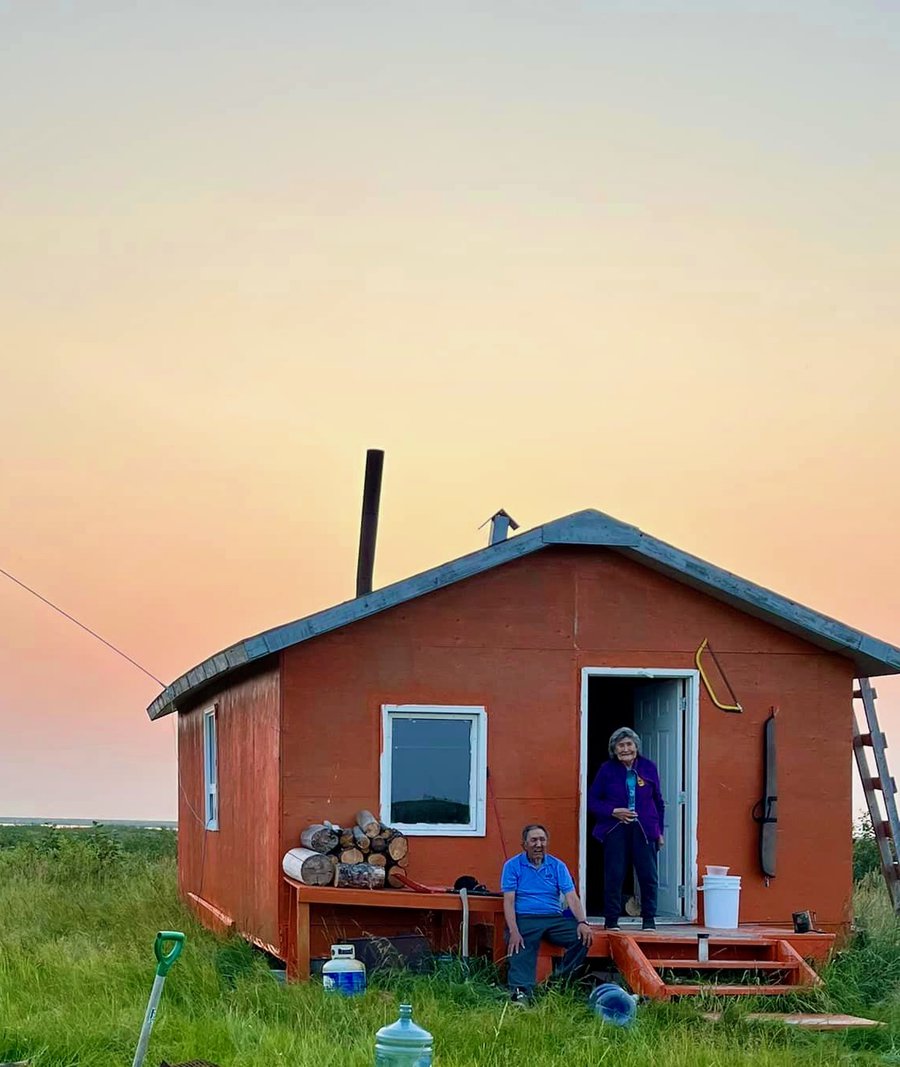
Traditional Conservation
Aullaviat/Anguniarvik Traditional Conservation Area is an Indigenous-led conservation area, a new approach to conservation where:
- Indigenous people are the primary stewards and managers of the lands and waters;
- The intent is to provide healthy ecosystems and communities for future generations; and
- Indigenous Peoples’ right to self-determination is centred, as is the role of Indigenous Peoples as stewards of their traditional territories.
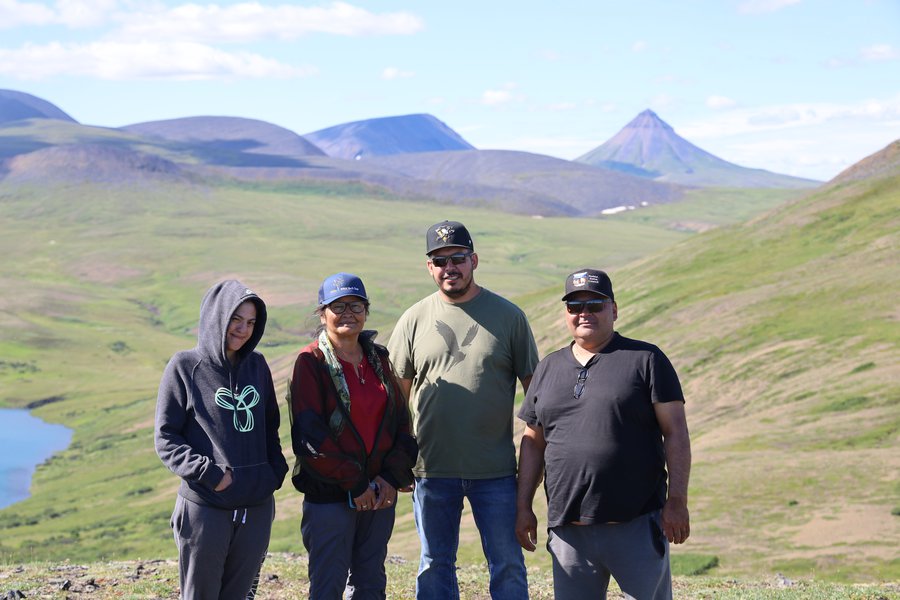
Management of Aullaviat/Anguniarvik
- The Aullaviat/Anguniarvik Traditional Conservation Area is managed collaboratively by Inuvialuit and the Governments of Canada and Yukon.
- The Aullaviat/Anguniarvik Working Group, made up of representatives from Aklavik, directs the day to day management of the conservation program.
- The parties to the agreement have developed a management plan for the area to ensure conservation and traditional Inuvialuit use: the Yukon North Slope Wildlife Conservation and Management Plan.
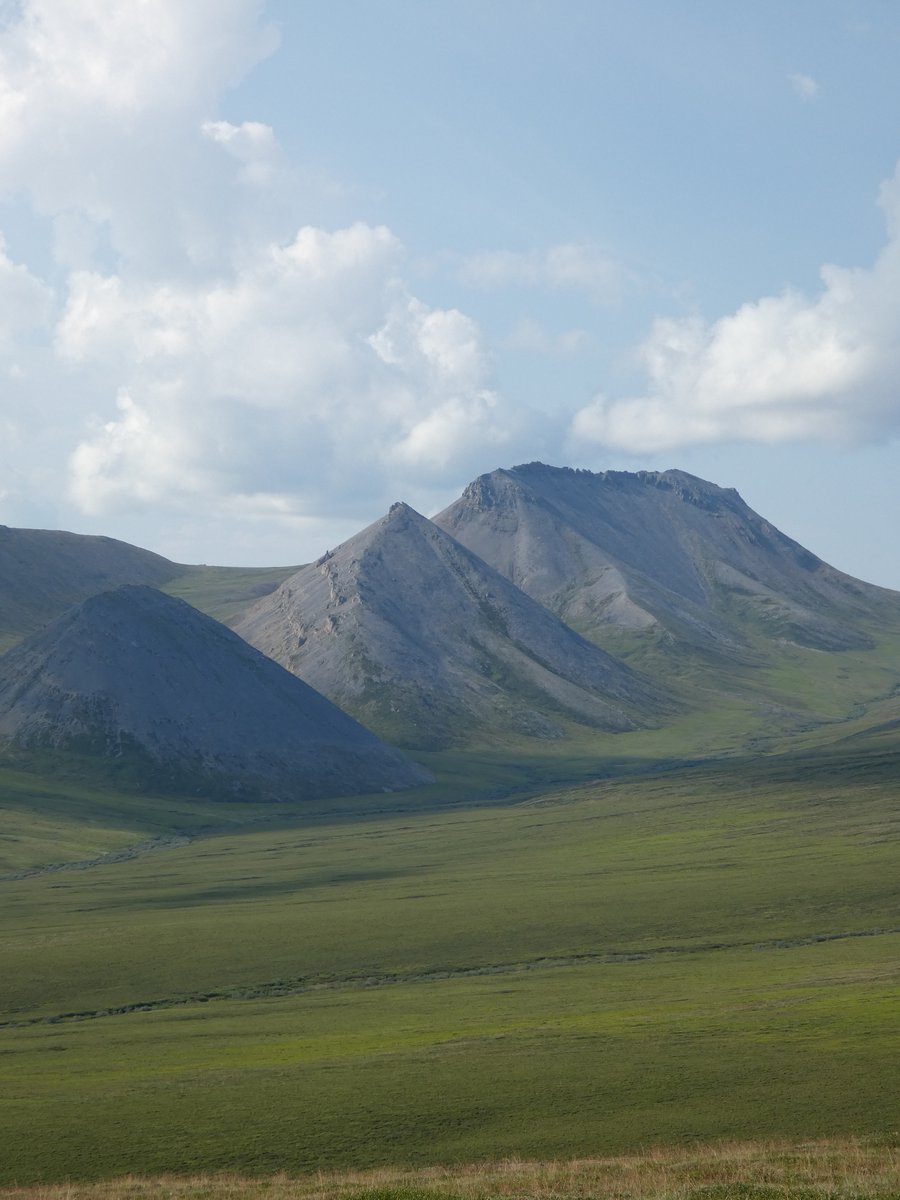
Conservation and Management Objectives
The goals of the conservation area include the following:
- Protect and conserve wildlife, habitat, and biological productivity;
- Contribute to the implementation of the Inuvialuit Final Agreement, the Porcupine Caribou Management Agreement, and the Yukon North Slope Wildlife Conservation and Management Plan;
- Advance the biodiversity goals, targets, and objectives of Canada, Yukon, and the Inuvialuit;
- Support Inuvialuit stewardship of the area in response to a rapidly changing climate;
- Provide resources to Inuvialuit to play a primary role in the management and monitoring of the area; and
- Contribute to reconciliation amongst the Parties (Inuvialuit, Canada, Yukon)
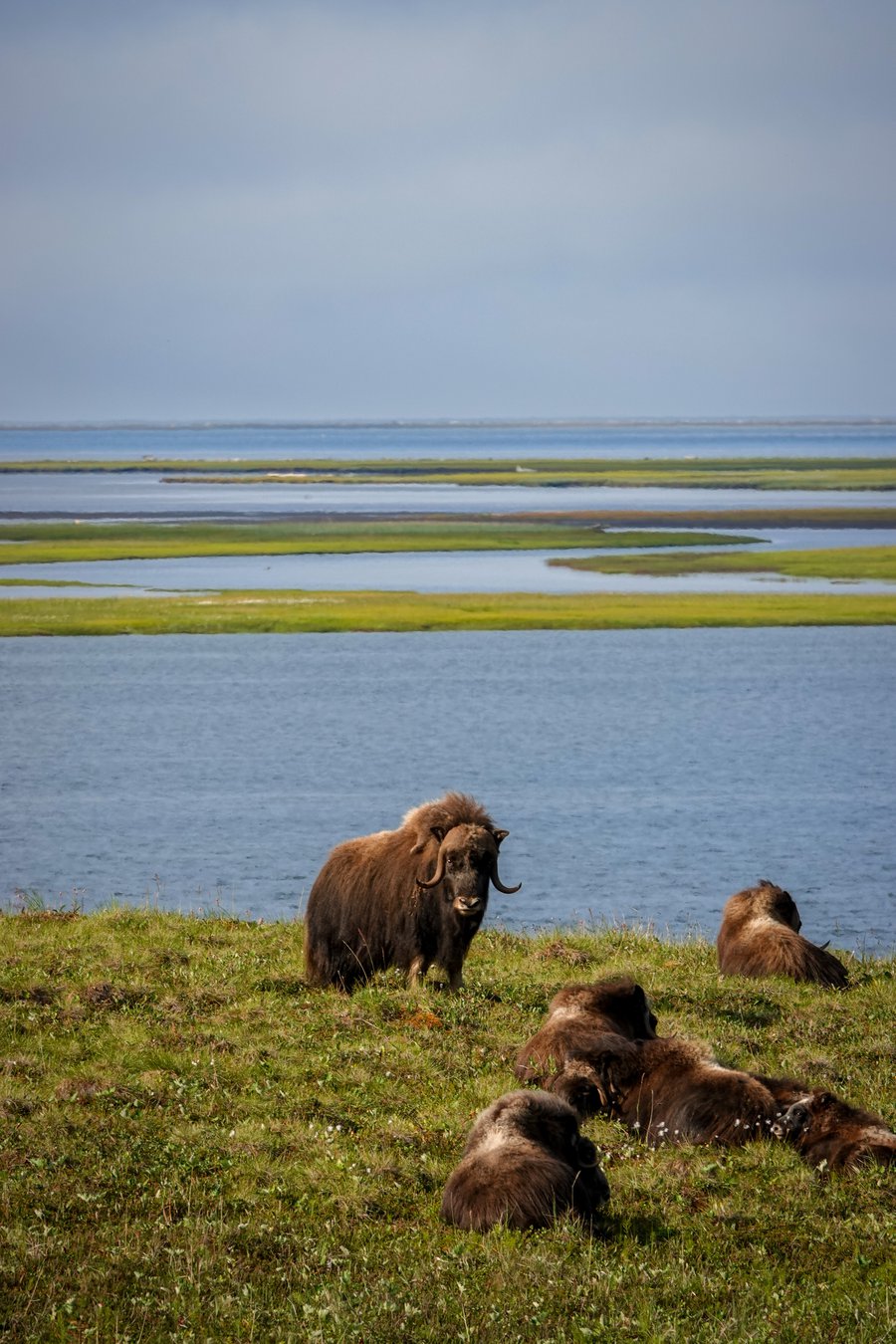
A Home for Wildlife
- Aullaviat/Anguniarvik contains important habitat for the Porcupine Caribou Herd; the conservation of this herd and its habitat is the subject of the 1987 Agreement between the Government of Canada and the Government of the United States of America on the Conservation of the Porcupine Caribou Herd.
- Read more about the Porcupine Caribou Herd and its habitat here.
- It is also an important area for muskox, moose, grizzly bears, polar bears, migratory birds and fish.
- Learn more about the wildlife in the Yukon North Slope Wildlife Conservation and Management Plan.
People on the Land
Inuvialuit are descendants of Thule people who - over a thousand years ago - migrated east from what is now Alaska to the area now known as the Yukon North Slope. These people were known as Qikiqtaryungmiut (or sometimes Turyurmiat). They harvested whales, caribou, fish,and other species and created a network of travel routes, hunting and fishing camps, spiritual places, and other cultural sites.
By the 1800s, Europeans began settling in the area - starting with whalers and then fur traders, missionaries and finally the RCMP. Colonial institutions arrived along with these industries, including police detachments, missions and residential schools on both Qiqiktaruk (Herschel Island) and Taqpaq (Shingle Point). The influx of outsiders brought changes to the marine and terrestrial ecosystems of the Yukon North Slope, and exposed Inuvialuit to diseases, reducing the population from about 2,500 in 1850 to 250 in 1905.
Inuvialuit continued to trap throughout the 1900s, although fur prices fluctuated. By the mid-1900s, civilian police were replaced by the Canadian military and the Distan. Early Warning System (DEW Line) was built, followed by the North Warning System in the 1990s. Oil and gas exploration in the Mackenzie Delta during the 1970s and 1980s further impacted communities and the local economy, placing more emphasis on wage-based living and large scale extraction of hydrocarbons.
In 1977, the Berger Report on the results of the Mackenzie Valley Pipeline Inquiry was released. The Report proposed a path toward balancing pipeline construction and the protection of the environment and Indigenous rights. The Report recommended a wilderness park be created spanning the entire northern Yukon. The Inuvialuit adopted this recommendation in 1978. The Berger Report cleared the way for the 1984 Inuvialuit Final Agreement, Canada’s first comprehensive land claim agreement and the identification of the North Slope as an area for conservation and Inuvialuit traditional use.
Caribou Homeland
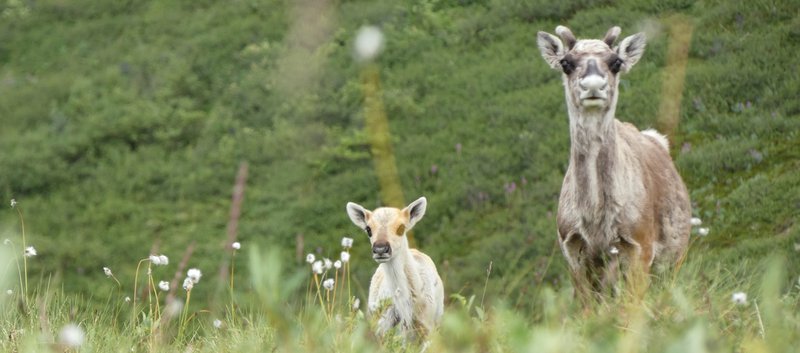
The Porcupine Caribou herd is one of the largest caribou herds in the world and has always been an important part of the ecology of the northern Yukon. The latest estimate of the herd is that there are over 200,000 individuals. The herd’s population since this time is the largest ever recorded for the herd.
Each year, the herd ranges over 200,000 square kilometres of northern tundra between Alaska, the Yukon and the Northwest Territories, and the traditional territories of the Gwich’in, the Tr’ondëk Hwëch’in, the First Nation of Na-Cho Nyak Dun and the Inuvialuit and Iñupiat people. The ability of the herd to move across the landscape and access different parts of their range at different times of year is critical for finding food, avoiding predators, having and raising their calves, and avoiding insects.
Aullaviat/Anguniarvik is an important summer and fall habitat for the herd because food availability is high, calves have stopped nursing, breezes off the ocean help reduce insect harassment, and the landscape is beneficial for avoiding predation. Late summer is when cows (female caribou) gain weight to support next year’s pregnancy, and it’s a critical time for all caribou to access enough quality food to survive the next winter.
Inuvialuit have coexisted with Porcupine Caribou for many generations and are actively involved in the collaborative management of the herd, bringing together Indigenous knowledge and science.
Taking Care of the Land
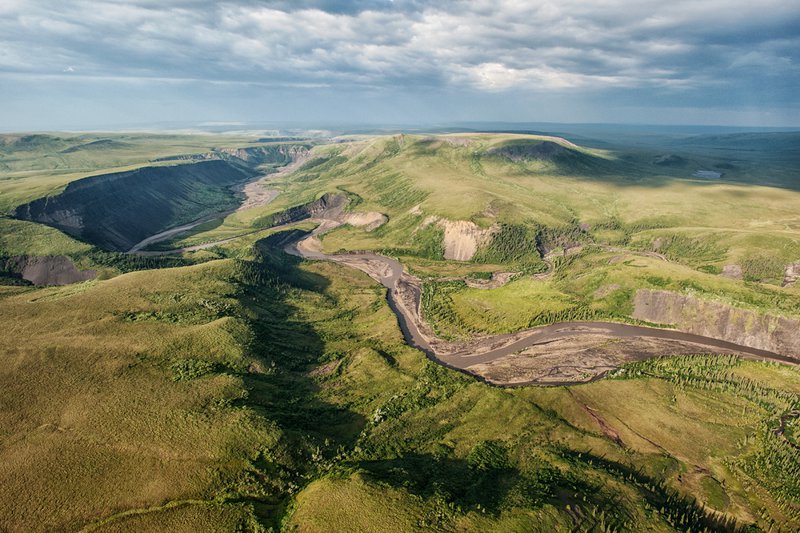
Research has found that biodiversity is highest on Indigenous stewarded lands. The Yukon North Slope Wildlife Conservation and Management Plan is the management plan for the Aullaviat/Anguniarvik Traditional Conservation Area. The Plan was written and recommended by the Wildlife Management Advisory Council (North Slope), an organization established under the Inuvialuit Final Agreement (IFA), to provide advice and recommendations pertaining to wildlife, habitat, and traditional use of the Yukon North Slope. The Plan’s goals, objectives, strategies and anticipated outcomes are intended as measures to further the needs of wildlife, habitat, and Inuvialuit users of the Yukon North Slope.
The Yukon North Slope Wildlife Conservation and Management Plan will be implemented by the Wildlife Management Advisory Council (North Slope) and the Parties of the Aullaviat/Anguniarvik Traditional Conservation Area Agreement. The Plan emphasizes collaboration, partnerships, and bridging Inuvialuit knowledge and science to support healthy ecosystems, enhance Inuvialuit traditional use, and better adapt to climate change.
Donate to Protect Aullaviat/Anguniarvik
Support Inuvialuit stewardship on the Yukon North Slope. Your donation will bolster the Aullaviat/Anguniarvik Trust, the mechanism through which the program will attain the goals set out in the Aullaviat/Anguniarvik Agreement, for generations to come.

